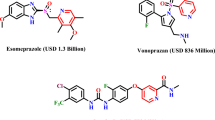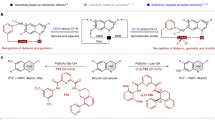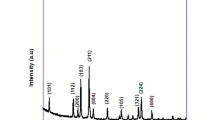Abstract
POLYCYCLIC derivatives of cinnoline are known to form molecular addition compounds with picric acid1. Contrary to the report by Slack and Slack2, I find that benzo [c]cinno-line, in common with its methyl derivatives3, forms a mono-picrate. My compound (found, C, 52.9; H, 2.8; N, 16.8; C18H11N5O7 requires C, 52.9; H, 2.7; N, 17.1 per cent) has the same melting point as that reported by Slack and Slack, who based their formula solely on a nitrogen content of 17.8 per cent.
This is a preview of subscription content, access via your institution
Access options
Subscribe to this journal
Receive 51 print issues and online access
$199.00 per year
only $3.90 per issue
Buy this article
- Purchase on SpringerLink
- Instant access to full article PDF
Prices may be subject to local taxes which are calculated during checkout
Similar content being viewed by others
References
Braithwaite, R. S. W., and Holt, P F., J. Chem. Soc., 3025 (1959). Corbett, J. F., and Holt, P. F., ibid., 3646 (1960).
Slack, P. Z., and Slack, R., Nature, 160, 437 (1947).
Corbett, J. F., Holt, P. F., and Vickery, M., J. Chem. Soc. (in the press).
Orchin, M., J. Org. Chem., 16, 1165 (1951).
Author information
Authors and Affiliations
Rights and permissions
About this article
Cite this article
CORBETT, J. Molecular Addition Compounds of Polycyclic Derivatives of Cinnoline. Nature 197, 177 (1963). https://doi.org/10.1038/197177a0
Issue date:
DOI: https://doi.org/10.1038/197177a0



